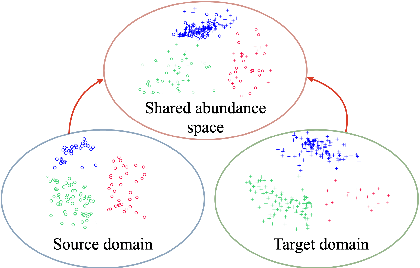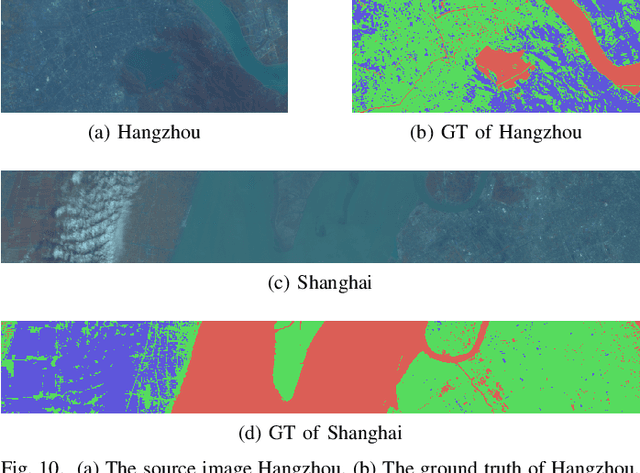Physically-Constrained Transfer Learning through Shared Abundance Space for Hyperspectral Image Classification
Paper and Code
Aug 30, 2020



Hyperspectral image (HSI) classification is one of the most active research topics and has achieved promising results boosted by the recent development of deep learning. However, most state-of-the-art approaches tend to perform poorly when the training and testing images are on different domains, e.g., source domain and target domain, respectively, due to the spectral variability caused by different acquisition conditions. Transfer learning-based methods address this problem by pre-training in the source domain and fine-tuning on the target domain. Nonetheless, a considerable amount of data on the target domain has to be labeled and non-negligible computational resources are required to retrain the whole network. In this paper, we propose a new transfer learning scheme to bridge the gap between the source and target domains by projecting the HSI data from the source and target domains into a shared abundance space based on their own physical characteristics. In this way, the domain discrepancy would be largely reduced such that the model trained on the source domain could be applied on the target domain without extra efforts for data labeling or network retraining. The proposed method is referred to as physically-constrained transfer learning through shared abundance space (PCTL-SAS). Extensive experimental results demonstrate the superiority of the proposed method as compared to the state-of-the-art. The success of this endeavor would largely facilitate the deployment of HSI classification for real-world sensing scenarios.
 Add to Chrome
Add to Chrome Add to Firefox
Add to Firefox Add to Edge
Add to Edge